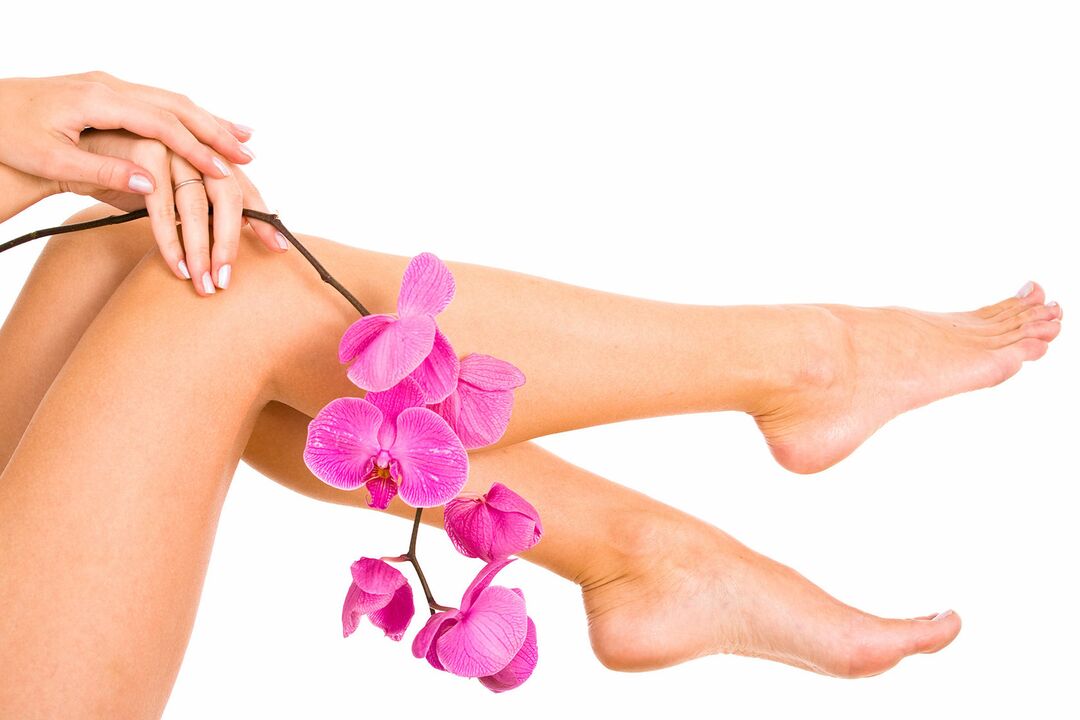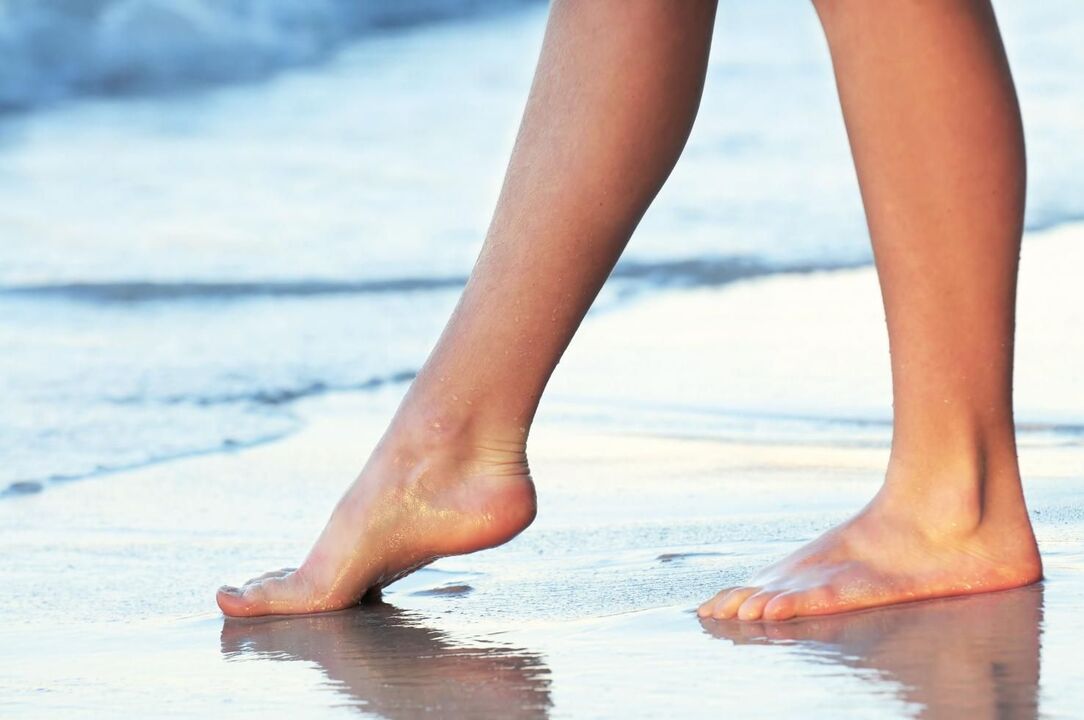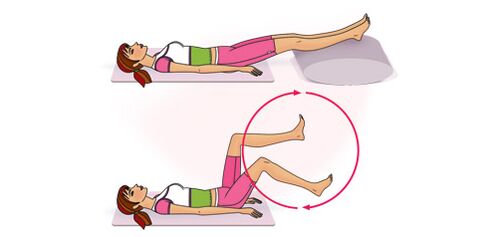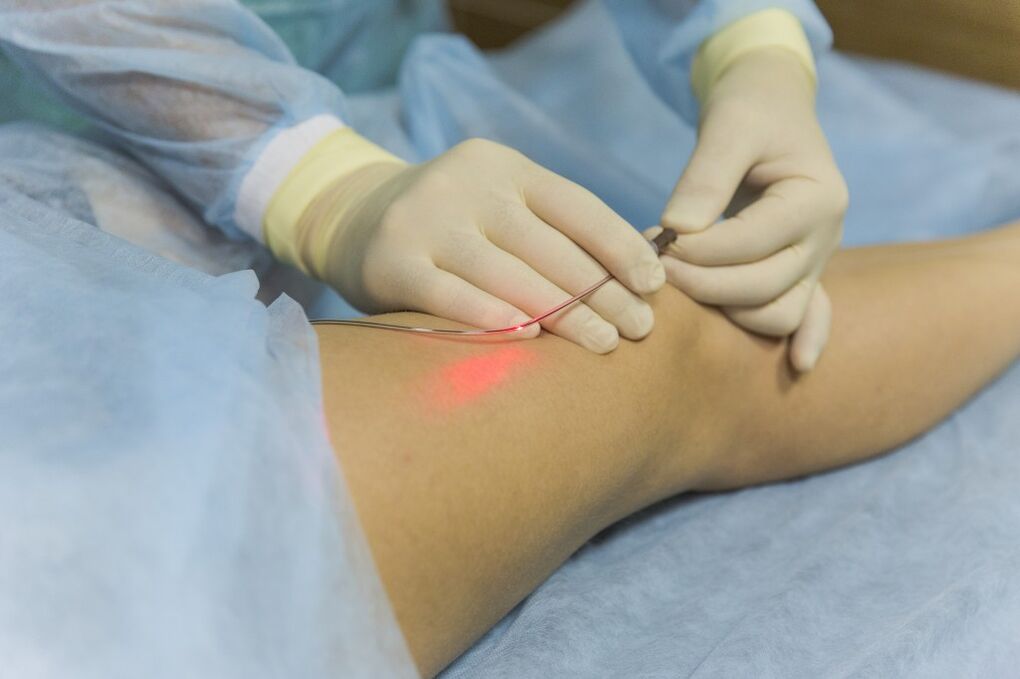
Varicose veins are a fairly common disease in adults. According to the World Health Association, about 40% of people are affected by the disease to varying degrees of severity.
The disease is more typical in women, every 5 representatives of the fair sex are susceptible to varicose veins. Men suffer from this disease to a lesser extent and only 10% face this problem.
In the early stages, the disease receives little attention and is not dangerous to the patient's life, but later on, dangerous diseases such as thrombophlebitis can develop. The resulting blood clots pose a serious threat to life.
Depending on the cause, two forms of varicose veins are distinguished, they are shown in the table:
| Elementary | Middle school | |
|---|---|---|
| Cause | Weakens and breaks down the structure of vein walls | Venous blood flow is impaired due to improper functioning of vascular valves |
| Aggravation | Excessive weight, pregnancy, standing work, compression of veins due to clothing, congenital weakness of vein walls | Development of many types of tumors, disruption due to trauma |
Cause of the disease
The essence of the disease lies in the abnormal increase in pressure in the superficial blood vessels due to disruption of the valves, which normally facilitate the flow of venous blood in one direction (toward the heart). When disturbed, the valves weaken and blood begins to stagnate in the veins, leading to them dilating, forming plugs, etc. v. In this case, blood flow slows down, which leads to nutritional disorders of cells and tissues and the formation of ulcerative processes.
Main causes of the disease:
- genetic predisposition;
- Staying for a long time in an upright position;
- Limit movement throughout the day;
- disorders of the endocrine system, caused by disease and by taking hormonal drugs;
- pregnancy;
- physical activity in many forms (at work, in the gym, at a motel, etc. );
- lower limb injuries;
- bad habits, especially smoking.
Note.Risk groups include people who have to stand all day, sit and move little, such as salespeople, teachers, drivers, people sitting in front of computers, etc. v.
The problem is that people who sit for a long time will compress blood vessels, which slows down blood circulation. Therefore, varicose veins develop in this case regardless of age, and in people who stand for a long time, according to the laws of physics, the blood creates a constant pressure on the vessels and as a result, they begin to deform, leading to varicose veins. development of the disease.
There is also a risk of:
- women wear high heels;
- participants in foot-bearing sports (strength sports, tennis);
- all people work standing;
- People have a habit of crossing one leg over the other when sitting;
- people who drink a lot of coffee and alcoholic beverages, which contribute to thickening of the blood, thereby reducing blood flow.
How to recognize the disease
The first signs of varicose veins are leg fatigue at the end of the day, swelling, for this reason shoes become tight. Occasional cramps and pain in the calf muscles may also occur.
You can visually notice the manifestation of this disease through the so-called stars, which consist of modified inflamed blood vessels. As varicose veins progress, irreversible pathologies arise in vessels of larger diameter and they begin to appear under the skin. The numerous knotty appearance of the latter is due to the delicacy of the walls in certain places.
Main features
But to understand more accurately whether it is varicose veins or not, we specifically list the main signs of the disease:
- pain and heaviness in the legs;
- unpleasant burning pain running along the veins;
- After a day of work, leg swelling is clearly visible;
- night cramps in the calves;
- veins become wider, more tortuous, denser to the touch;
- The epithelium of the legs becomes denser and darker;
- Nutritional ulcers may occur.
Prevention and treatment
If you identify symptoms of varicose veins, you should consult a specialist. Treatment and prevention of varicose veins requires contact with medical facilities.
Only a doctor, after determining the exact diagnosis, determines the treatment and eliminates the cause. There are a number of simple rules, compliance with which can stop the development of the disease or even in some cases help prevent its development.
The main ones are listed below:
- Avoid the influence of temperature on veins. Hot baths, saunas, and prolonged exposure to sunlight lead to decreased vascular tone, causing blood to stagnate, especially in the legs;
- Physical activity. All sports, except those with heavy loads, are beneficial for the cardiovascular system. Light running, aerobics, morning exercises and gymnastics help strengthen veins especially well.
- Overweight. For some reason, blood and vascular conditions become worse in obese people. A larger volume creates greater pressure, the heart has to work harder to pump out all the blood, excess cholesterol leads to blockage of blood vessels, the development of arteriosclerosis, thrombosis and other diseases of the cardiovascular system.
Advice.If you do not want varicose veins and feel happy, carefully monitor your weight and prevent the development of obesity.
- Tight clothing impedes blood circulation. Get rid of tight stockings, stockings and tights with tight elastic bands, don't belt too tight, and generally eliminate any compression on the veins.
It should be noted that there are special supportive stockings and tights that inhibit the development of varicose veins. - Divide the load when working, change your position, don't stand still for long.
- When sitting, don't put one leg over the other. This impedes the passage of venous blood through the vessels.
- More movement. A static sitting position for a long time and especially an upright position will stimulate the disease to develop because the pressure in the legs increases and the venous blood flow slows down. So the more movement, the better. Take breaks, change positions, etc. v.
- Normalize stool. Both constipation and diarrhea negatively affect the vascular system. So, make sure your diet includes fiber-rich foods. Avoid beans, beer and yeast products if you are prone to bloating.
- Eat less salt. Salt and then drinking water will cause swelling.
- Practice limb exercises. Before going to bed and after waking up in the morning, you should do finger and toe rotations for a few minutes, this will improve blood circulation.
- Avoid wearing tight shoes, and people with high heels.
- After a day at work, at home, make it a habit to wash or wash your feet with cold water.

Note that it is useful to prevent varicose veins by walking barefoot through the dew or along the shore in the surf, wetting your feet.
In cases where there are no symptoms of varicose veins, but there is a tendency to develop this disease, daily foot massage will be very useful. It's very easy to do. This technique includes leg stroking and acrobatics.
Note.Massage is contraindicated if the doctor diagnoses varicose veins!
Patients are advised to elevate their lower limbs when resting or sleeping. To do this, you should put your feet on a hill, to do this, use all available means, you can put a pillow or cushion.
A contrast bath for your feet will help, or after a warm bath, wash your feet with cool or cold water.
Swimming is indicated for varicose veins, it not only forces all muscle groups to work, but also perfectly strengthens blood vessels. Morning jogging, hiking, cycling and skiing are also good options.
Physical therapy
Treatment and prevention of varicose veins will be successful if you practice gymnastics.
Here are simple exercises you can do without being distracted from work or housework:
- Raising calves. The instructions to follow are very simple. To perform this movement, you need to stand straight with your feet close together. Perform the lifting movement about 30 times, stand on tiptoes and return to the starting position. There are three types of exercises:
- toes next to each other, heels next to each other;
- Toes next to each other, heels far apart;
- Heels closed, toes apart.
All variations should be performed 20-30 times per pose;
- Roll on your feet. Stand straight with your feet together. Roll from toes to heels. Also repeat on the inside and back of the foot. Number of repetitions as desired, spend 2-3 minutes on the exercise.
- Bicycle. Can be performed both lying down and sitting in a chair. Use your legs to imitate riding a bicycle, as shown in the photo. Legs must be completely straight when performing. 30-40 repetitions are enough.

Nutrition and diet
Proper nutrition and compliance with the diet not only help to cope with varicose veins, but also have a positive effect on the entire body. Enrich your diet with plant foods, especially fruits, while eliminating fatty, spicy, salty and smoked foods, which lead to blood thickening and clotting.
A vegetarian diet is preferred, but as this is not suitable for everyone, try to prioritize lean meat, fish and animal proteins of marine origin. Reduce alcohol consumption as much as possible, eat more fortified foods, especially rich in vitamins A, B, C and E.
The first and last help strengthen the epithelial blood vessel walls, and also increase the body's overall immunity. Regular intake of vitamins C and E helps strengthen the collagen fibers of blood vessels and their valves.
Scientists have proven the positive effects of eating fresh garlic on the cardiovascular system thanks to its unique chemical composition. Let's just focus on the effect.
Garlic prevents the formation of blood clots and promotes the dissolution of existing blood clots, preventing the development of arteriosclerosis and varicose veins. In addition, it also stimulates the body's defense mechanism and helps prevent colds.
It is important to note that you should not overuse garlic. Eating a few cloves a day is enough. If you are too addicted to this spice, you may suffer from stomach and heart problems.
Some basic nutritional principles:
- You should stew or boil lean meat;
- Lactic acid products such as yogurt, kefir and cheese are very healthy, especially when the fat content is low;
- Increase consumption of vegetables, whole grain products and legumes. They are high in fiber and potassium compounds. The first helps fight stagnation in the body and constipation; Potassium regulates channels in water-salt metabolism in the body's tissues. Please note that industrial processing reduces the amount of useful trace elements and eliminates the beneficial properties of fiber;
- the amount of fast (sweet) carbohydrates and salts should be reduced to minimum values;
- For cooking, use dishes with a special coating that allows you to cook food without using grease to heat the surface;
- Replace animal fat with vegetable fat, do not cook twice in the same oil;
- For salad dressing, use olive oil, low-calorie sour cream, kefir or yogurt.
Treatment of varicose veins
Varicose veins are quite difficult to treat, and it is much easier to prevent their appearance or control the development of the disease by slowing its progression. When the disease is detected, according to statistics, about 15-20% of patients completely recover, but you should not despair.
Damaged veins have a stretched structure, causing stagnant processes in them. In cases of severe vascular damage, they require surgical treatment by removing the ear to avoid spreading the disease to healthy veins.
Currently there are many methods of treating the disease. In most cases, these are minimally invasive techniques and only in the advanced state do patients have to go on the operating table.
Among the most frequently used, we highlight the following:
- Sclerotherapy.Simply put, vein removal without direct surgical intervention. The bottom line is that a special drug is injected into the damaged blood vessel with a needle, it sticks to the wall of the vein, and after about a week it goes away on its own.
- Laser therapy.A special probe connected to a laser is inserted into the vein through a microscopic incision. The vein is burned from the inside, which leads to adhesion of the walls and its subsequent resorption.

Basic treatment techniques
Early detection of the disease contributes to successful treatment if it is started promptly. The more varicose veins develop, the more difficult it is to treat.
Among the main techniques, therapeutic massage has proven to be good, but with the condition that it must be performed by a professional. Thanks to proper leg manipulations, blood circulation increases and blockages in blood vessels decrease.
Treatment usually involves wrapping the limbs with elastic bandages or wearing special compression stockings. This helps to avoid the development of the disease and the appearance of complications such as thrombophlebitis.
The additional compressive force created compresses the veins, causing their lumens to narrow, creating increased blood flow, reducing congestion in the vessels. This prevents the blood from thickening and forming clots.
Treatment also includes compliance with all the basic precautions described above. Among them, special attention should be paid to diet, combating overweight, regular rest and therapeutic exercises.
After consulting with a doctor, drug treatment and the use of various creams and ointments are prescribed. Oral medications have anti-inflammatory and pain-relieving effects, while also helping to thin the blood and strengthen blood vessel walls.
Creams for preventing and treating varicose veins also show similar results. The price of these drugs is affordable, they are available without a prescription. Their use does not cause complications, but a doctor's professional opinion should still be sought.
Traditional treatment methods
Treatment and prevention of varicose veins with traditional medicine is not a panacea, but it can improve basic treatment results and relieve symptoms, especially when used at home. .
The most common methods are as follows:
- baths with decoctions of medicinal herbs (St. John's wort, chamomile, plantain, etc. ), which strengthen blood vessels and increase blood flow;
- compresses with sea buckthorn oil or aloe juice have an excellent wound-healing effect and are used to treat eczema and trophic ulcers (honey can also be used for this purpose);
- the use of decoctions or tinctures of herbs that help thin the blood (hawthorn root, licorice or angelica, sweet clover and others).
Complications of varicose veins
If varicose veins are not treated or not taken seriously, stagnant processes will progress, causing the disease to develop and a number of accompanying pathologies to arise, making the general condition worse andreduces comfort in life. Nutrition of the epithelial layers of the skin deteriorates.
This causes the appearance of eczema, necrosis or trophic ulcers, which become chronic. Due to the formation of blood clots, the veins become abnormally tortuous and strongly bulge.
Lime begins to settle in it and so-called "venous stones" appear. The spots that appear may burst and bleed. Swelling of the legs becomes permanent and "elephantema" appears.












































